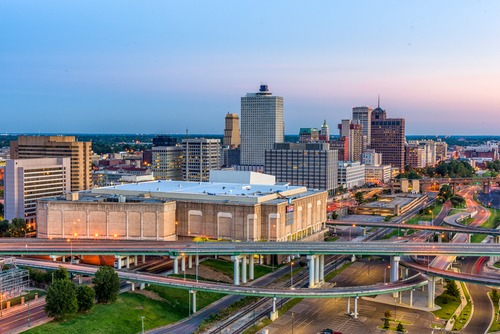
Tennessee needs at least $58.6 billion worth of public infrastructure improvements over a five-year period, according to a recent report from the Tennessee Advisory Commission on Intergovernmental Relations (TACIR).
The figure represents a nearly 7 percent increase, $3.8 billion, over the year before. Most of the increase, $3 billion, is attributable to increases in the need for transportation and utilities infrastructure, particularly in the area of new road and sidewalk projects. Those two areas make up the bulk of the projects at over $32 billion. The second-highest category was education, including school renovations and additions, at $14.2 billion.
A $608 million increase in needed improvements for general government infrastructure also contributed to the increase. Most of that is for improvements at public buildings and facilities. The report said that approximately $252 million is needed for renovations to state buildings in Nashville alone.
It is the fifth year in a row the state has seen infrastructure needs for transportation and utilities increase. Last year, the state needed $54.8 million in public infrastructure improvements, a 9.7 percent increase over the 2019 figure. In that year, more than $3.7 billion of the increase was also attributed to increases in the need for road projects.
The 19th year for the report, TACIR is directed by state law to compile and maintain an inventory of infrastructure needs for a five-year period in order to help legislators make informed decisions on where to direct infrastructure investment. The most recent inventory includes projects that need to be in some stage of development during the five-year period July 2019 through June 2024.
“Many decision-makers have noted that in a time of tight budgets and crisis-based, reactive decisions, the annual inventory process offers the one opportunity they have to set funding issues aside for a moment and think proactively and broadly about real infrastructure needs,” the commission said in its report. “For most officials in rural areas and smaller cities, the inventory is the closest thing they have to a Capital Improvements Program (CIP). Without the inventory, they would have little opportunity or incentive to consider their infrastructure needs.”
The need for infrastructure investment was seen across the state.
“Public infrastructure is needed in every corner of the state, from highly populated counties like Shelby and Davidson to rural counties like Humphreys and Pickett,” the report said. “In general, it has been the case throughout the history of this inventory that the more people living in a county and the more that population grows, the more infrastructure the county will need. However, relative to their populations, counties with small populations need just as much or more infrastructure than counties with large populations.”
But the funding for those projects isn’t there.
A little over 65 percent of the funds required to meet the infrastructure needs is not available, the report indicated. Excluding improvements at schools and those drawn from the capital budget requests, only $15.5 billion out of the $44.3 billion needed to meet the remaining infrastructure needs.
The report said that estimated costs were up in another two categories: recreation and culture (up $113 million), and in health, safety and welfare (up $86 million). Two categories saw needs drop: education (down $42 million) and economic development (down $14 million).
As part of the report’s outlining of infrastructure needs, a breakdown of projects by county is included. In some cases, like in Davidson County, home to the capital and to more than 694,000 people, had more than $10.3 billion in infrastructure needs, an increase of $1.2 billion (or 13.7 percent) over the previous year’s report. The county’s cost for the new or improved infrastructure equates to $14,838 per capita, nearly twice the average for the statewide per capita of $8,578.
In comparison, in nearby White County, population 26,800 as of 2019, public infrastructure improvements total only $84.5 million, a decrease of $35 million (a little more than 29 percent decline) since last year’s report.
White County officials said the county’s top three areas of need are: transportation ($46.6 million), water and wastewater ($13.8 million) and recreation ($7 million). The figures represent a $3,088 per capita investment in infrastructure, less than half of the statewide per capita. For transportation alone, the county’s estimated per capita is $1,706, an estimated 36 percent of the statewide per capita.